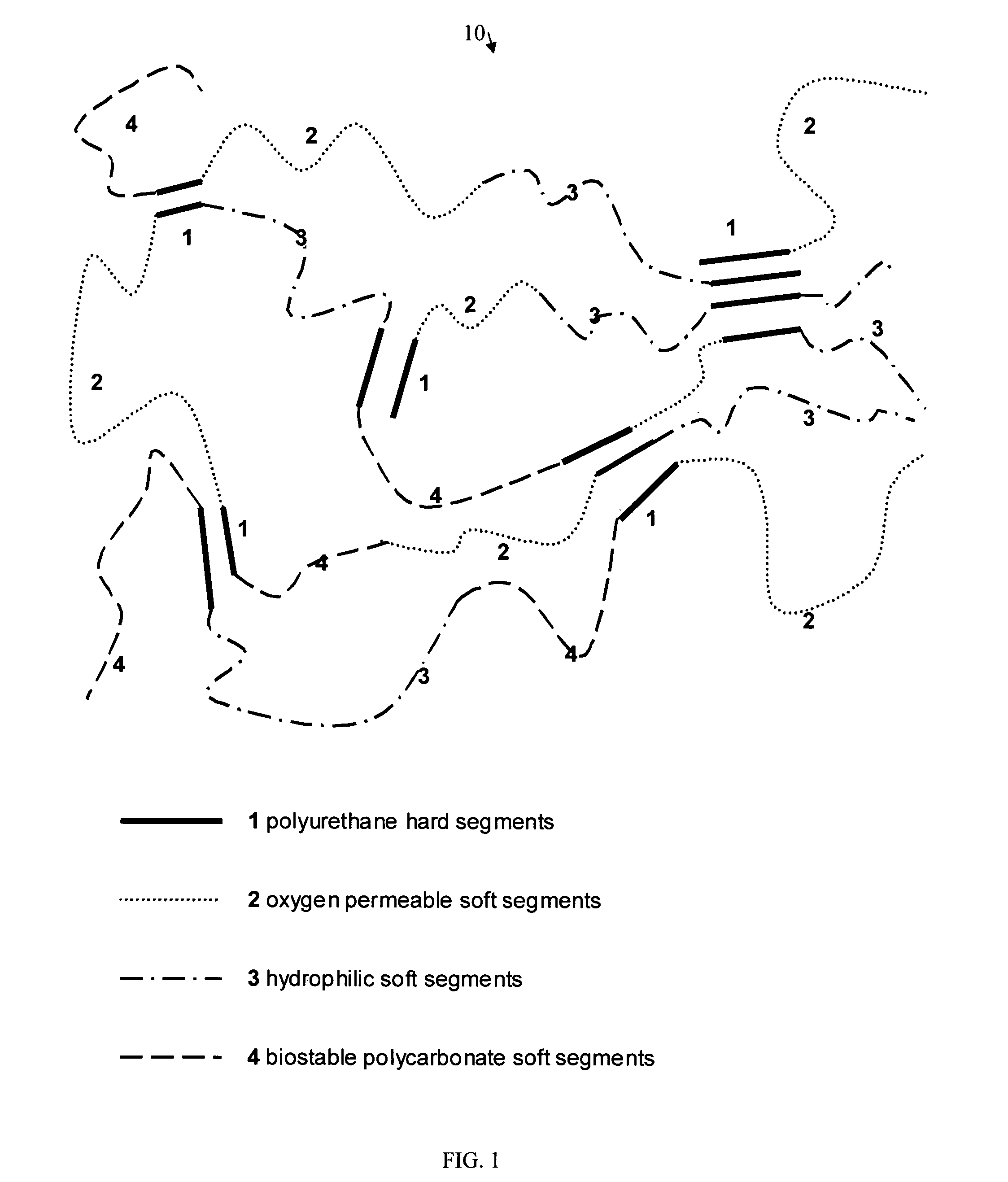Permselective structurally robust membrane material
a structurally robust, membrane-based technology, applied in the direction of enzymology, biomass after-treatment, biological testing, etc., can solve the problems of loss of membrane or fiber strength and integrity, weak and prone to breakage on the sensor, and conflicting requirements for structural strength and integrity
- Summary
- Abstract
- Description
- Claims
- Application Information
AI Technical Summary
Benefits of technology
Problems solved by technology
Method used
Image
Examples
synthetic example 1
Solution-Based Synthesis
[0020]In this Example, the soft segments are polyhexyl ethyl carbonate diol (PHECD) having a molecular weight of 2000, polyethylene glycol (PEG)—having a molecular weight of 1500, and polydimethylsiloxane diol (PDMSD)—having a molecular weight of 1000, the hard segment is composed of 4,4′-diphenylmethane diisocyanate (MDI) having a molecular weight of 250.26 and ethylene diamine (ED) having a molecular weight of 60.1, and the endgroups are methoxy polyethylene glycol (mPEG) having a molecular weight of 2000 and mono-functional OH-terminated polydimethyl siloxane (mPDMS)—having a molecular eight of 2000. A reactor is charged with 8.6 moles of PHECD, 6.9 moles of PDMSD, 0.044 moles of mPDMS and 3.8 moles of PEG. The reactants are dried under vacuum with a nitrogen purge. Then 32.7 moles of 4,4′-diphenylmethane diisocyanate solution in dimethylacetamide is added to the reactor, and the contents of the reactor are further diluted with additional dimethylacetamide...
PUM
| Property | Measurement | Unit |
|---|---|---|
| tensile strength | aaaaa | aaaaa |
| elongation | aaaaa | aaaaa |
| water absorption | aaaaa | aaaaa |
Abstract
Description
Claims
Application Information
 Login to View More
Login to View More - R&D
- Intellectual Property
- Life Sciences
- Materials
- Tech Scout
- Unparalleled Data Quality
- Higher Quality Content
- 60% Fewer Hallucinations
Browse by: Latest US Patents, China's latest patents, Technical Efficacy Thesaurus, Application Domain, Technology Topic, Popular Technical Reports.
© 2025 PatSnap. All rights reserved.Legal|Privacy policy|Modern Slavery Act Transparency Statement|Sitemap|About US| Contact US: help@patsnap.com

